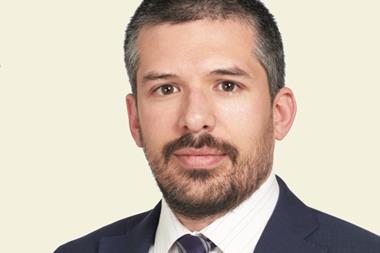Denmark's ATP, Belgium's KBC Pensioenfonds and Austria's VBV Pensionskasse reveal how they invest in the emerging markets.
Anders Svennesen
Vice-president of investments at Denmark's ATP
Emerging markets have been part of our investments for a decade. We believe they offer the best growth perspectives However, buying into growth markets comes at a premium, especially when all investors are heading in the same direction.
We are both invested in emerging market debt and equity, with approximately DKK7bn (€900m) allocated to debt and DKK2bn to equity.
ATP's investment approach is based on a risk factor model and two different portfolios: an absolute return-seeking investment portfolio and a hedge portfolio. The investment portfolio has five different risk classes - interest rates, credit, equities, inflation and commodities. When we allocate risk to equities, emerging markets are part of that exposure while emerging market debt makes up a powerful part of our credit exposure.
We achieve our emerging market equities exposure either through a cash portfolio via external managers or through derivatives, such as futures on emerging market indices, which we do in-house.
Our externally managed emerging market debt funds are euro-denominated. The funds can buy hard currency debt and local currency debt but at least 80% of the currency exposure has to be hedged into euro. Up to 15% can also be invested in corporate emerging market debt although this does not form part of our benchmark.
We have not yet considered any other asset classes in emerging markets.
There could be risk of a bubble building up in some emerging market countries but we are satisfied with, and will stick to, our highly diversified exposure. Performance-wise these investments have yielded, higher returns and higher volatility. Over a long-time horizon, we expect the same magnitude of risk-adjusted returns for all different asset classes, in other words we expect emerging market bonds and equities to yield approximately the same return for a certain amount of risk.
The Danish pension fund regulator has set limits on emerging markets exposure but we are nowhere near those and have our own regulation to adhere to. We still invest a fair amount of the portfolio in those assets but as we are allocating risk and not capital between asset classes the cash allocation to emerging markets is not expected to grow.
Edwin Meysmans
Managing director at Belgium's KBC Pensioenfonds
We have been investing in emerging markets equities for a decade. After a strategic review of the equity portfolio in 2010, we more than doubled our previous exposure of 5% primarily at the expense of European equities.
At the end of July, 12% of our overall 40% equity exposure was allocated to emerging markets.
We had two main reasons for investing in emerging market equities: as a long-term investor we took a strategic view on future growth and better demographics than Europe and the US as well as a new breed of consumers that are a good indicator of future growth.
Emerging market countries suffered a lot less from the financial crisis. Their banking system was largely untouched by it, leaving the countries and governments in pretty good shape. We particularly have a preference for new Asia.
We briefly looked at emerging market debt but have not invested as it does not fit into our portfolio, which has almost no allocation to US or European sovereign bonds, as we hedge our liabilities with interest rate swaps. Nevertheless, there may be some room for emerging market or high yield debt in the future.
Looking at the different possibilities of investing in emerging markets, currency is probably the purest way to get exposure if you expect emerging market economies to do well, as this should be reflected in the strengthening of the respective currency. However, it is a difficult play because we see, for example, the pressure by the US on China to control their currency. The other drawback is that even if an economy is booming, like China, it does not necessarily mean that the stock markets, in other words the local equities are booming too. There is no automatic link, especially in the short term, between the economy and its stock market.
We do not think it is the time to increase our allocation on a tactical level but we are not decreasing it either. As a long-term investor we are not too worried about any short-term corrections or a potential bubble.
All our emerging markets exposure is handled in-house by KBC Asset Management. We invest via two of its funds, a specific fund focused on new Asia and a general institutional emerging markets fund, covering Latin America, Eastern Europe and new Asia.
The Belgian regulator has some restrictions on currencies outside OECD countries but we usually invest through euro or dollar denominated funds anyway.
Michaela Attermeyer
Head of investments at Austria's VBV Pensionskasse
We have been investing in emerging markets for a long time and their exposure has significantly increased. Our strategic exposure to emerging market equities currently stands at 20% to 30% of the overall equity allocation. In general, we aim for a strategic split with a third of the portfolio invested each in Europe, North America and Asia inclusive of emerging markets.
Our allocation to emerging market debt accounts for 10% of our overall bond portfolio.
The Austrian regulator sets no limits on emerging market investments other than a maximum limit on equities and foreign currency.
The reason why we invest in emerging market bonds is because those countries appear, especially now, to be in a better position with regard to the quality of their sovereign debt than many of the developed markets.
In addition, emerging market currencies have more appreciation potential than currencies in developed markets, particularly compared to the euro or the US dollar. The credit ratings of companies in emerging markets are often just as sound, or even better than that of companies in developed countries and they still manage to generate a higher return at the same time.
On the equity side, we run a regional strategy, in other words we have a separate global emerging markets mandate, which we complement with special Asian mandates. All emerging market equity investments are undertaken through mutual funds.
We also invest in emerging market debt through mutual funds with the exception of central and eastern Europe, where we have been investing via a VBV Spezialfonds over the last few months due to the geographic proximity of those markets and the profound expertise of Austrian managers in these markets.
We also access emerging markets to a minor extent through our property investments but this is not a strategy we want to expand. The main investments are undertaken via equities and bonds.
We are fully aware of the additional volatility that comes with emerging market investments but expect a continued outperformance from our emerging market exposure.
However, we saw the beginnings of an emerging markets bubble at the end of last year when, due to the strong inflows of capital, those countries had excess liquidity. We saw this as a warning sign, which is why we have been reducing our emerging markets exposure since the end of last year, especially on equities.












No comments yet